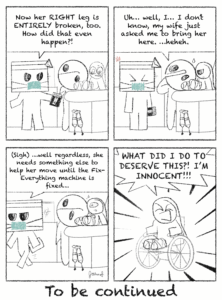Often, I try to ignore the obvious. I try to dismiss the trend I’m seeing: the trend that women are shying away from STEM (Science, Technology, Engineering, Mathematics) related fields. The paucity of females in these areas has, quite frankly, become a red flag.
Yet this issue is not solely within my line of sight. The controversy of Twitter only employing a single woman among its top executives has recently rekindled this observation, opening a national conversation. Facebook COO Sheryl Sandberg and Yahoo CEO Marissa Mayer have, as of late, redefined perceptions of authority and the role of women in the workplace.
The sad reality is that women are both under-recognized and under-represented in engineering and other technical fields. Only 18 percent of college students graduating with computer science degrees in 2008 were women, down from 37 percent in 1985, according to the National Center for Women and Information Technology. These numbers dwindle after race is factored in, with smaller percentages of women in IT who are African-American, Asian, or Hispanic.
This is not a question of intellect. No disparity in IQ between genders exists. But it certainly does not help when men crudely tease the opposite sex. One of my friends, a computer science female who graduated last year, attended a tech conference where a man asked her if she was there “because of her boyfriend.” I think “shock” is a good word to describe her, or anyone’s, rational reaction.
Beyond this, the core of the problem sits with how our society, particularly American culture, perceives the technical arena. Speaking from an IT perspective, the tech industry undoubtedly harbors an image problem. Computer scientists are often portrayed as lanky, anti-social, video game-playing males. This, likely, is enough to dissuade a substantial portion of women considering the field.
As early as elementary school, girls start to turn away from math and science. Not enough encouragement from parents, teachers without proper resources, and a lack of exposure are just a few factors, according to a report by the Anita Borg Institute. Innately cautious, girls tend to convince themselves that they’re not missing out on any opportunities. This demands a change in curriculum, parental mindset, and the way our society fundamentally operates.
I say this because I’m involved in work that is simultaneously challenging, interesting, and carries the potential to impact people all around the world. I’ve collaborated with a number of people, refuting the notion that computer science involves little to no human interaction. Agile software development, a methodology emphasizing cross-functional teamwork, particularly requires solid interpersonal skills.
For any team to succeed, though, diversity is part and parcel. Today’s dynamic tech industry surges with opportunities and will continue to do so. As Sandberg points out, take the opportunity to change the inequality. Now is the time to abandon previous beliefs, eradicate assumptions, and embrace a future urging for a mixed-gender outlook.
Kerem is a member of the class of 2015.


